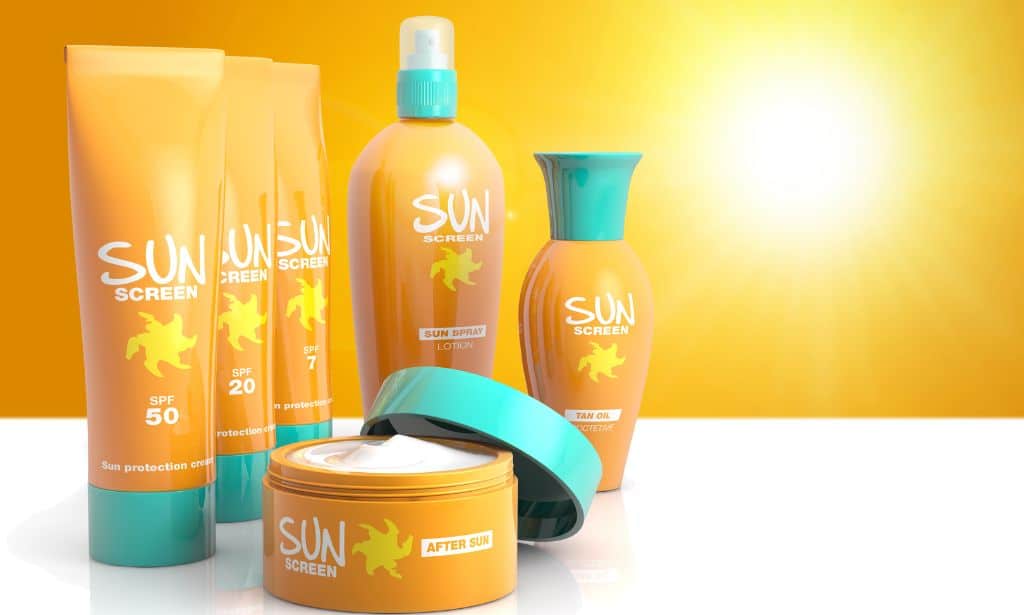The AAD recommends that everyone use broad-spectrum sunscreen regardless of their skin tone. This is vital to protect the skin against sunburns, early aging, and skin cancer.
But do kids need sunscreen too?
According to Dermatologist Dr. Jaishree Sharad, kids need to use sunscreen as much as adults do, if not more. Children spend a lot more time outdoors playing, and their skin is more tender, so it needs more care.
But because their skin is so tender and sensitive, not any sunscreen out there is suitable for kids. Let’s learn more about this.
What Age Should Kids Start Applying Sunscreen?
Dermatologists recommend starting at the age of six months. This is because an infant’s skin before then is too fragile and sensitive, and you should avoid applying anything that is not 100% pure to it.
But what do you do when taking them outside for some sun and fresh air? Well, the AAD states that sunscreen should be the last result of sun protection. You should start by keeping the baby away from direct sunlight and also dress them up in lightweight clothing that covers most of the body and a wide-brim hat to shadow the face.
And if you are wondering, no, you do not need any special UV protective clothing. Several studies have proven that regular clothes offer sufficient protection against sun rays, provided they cover the skin.
Dr. Huang, the Head of the Dermatology Program at Boston Children’s Hospital also advises parents to watch the clock when taking babies outside. The sun is strongest between 10 am and 4 pm and also provides less vitamin D. It’s, therefore, best to take the kid outside before 10 in the morning or later in the evening.
But if you can’t avoid these harsh hours, Dr. Huang recommends using an umbrella or sunshade to protect the child.

Importance of Sunscreen for Children of Color
Do black kids need to use sunscreen as well? Everyone should use sunscreen, regardless of their skin tone, including black, Asian, Middle Eastern, and Native American people.
According to Dr. Huang, everyone has the same melanocytes (cells that make skin pigment) no matter their skin tone. The difference is the amount of melanin those cells make, with light skin people making less melanin.
While melanin provides some defense against ultraviolet rays, it is not sufficient protection. Light-skinned people are more at risk, but skin cancer can happen to anyone. The scary part is, types of skin cancer tend to be noticed late in dark-skin people, making them harder to treat.
But sunburns and skin cancer are not the only issues you need to worry about. Post-inflammatory hyperpigmentation, which is where the skin darkens after irritation due to acne, eczema, or bug bites, can get worse due to sun.
Moreover, inflammatory auto-immune diseases like lupus and dermatomyositis are photosensitive, meaning the sun can trigger them.
All these can be prevented by using sunscreen the right way, avoiding direct sunlight, and covering up. Black don’t crack may be a lovely saying, but it’s not really true when it comes to the sun.

What to Look for When Choosing Sunscreen for Kids
Dr. Jaishree Sharad states that both chemical and mineral sunscreen products are FDA approved for kids above six months. However, mineral or physical sunscreen is much better for babies because the natural ingredients (titanium dioxide, zinc oxide, and avobenzone) are less likely to irritate their delicate, sensitive skin or body.
We have a comprehensive post on the best Sunscreen type for kids.
While choosing a sunscreen for your baby, Dr. Sharad recommends looking at these three factors;
- Broad-spectrum. This means the product protects your child’s skin from both UVA and UVB sun rays.
- SPF 30 or higher. Sun protection factor or SPF is how long the sunscreen will protect your skin from UVB rays. The higher the SPF, the better, but the difference starts to get very minute after SPF 50.
- Water-resistant. This will be very helpful when the child plays in water, swims, or sweats due to activity. The sunscreen will at least still hold on for the time being before reapplication.
While looking for what you want in your child’s sunscreen, keep an eye on what you don’t want to see, either. For example, you should avoid anything with oxybenzone, which has potential estrogen-like effects when absorbed in your bloodstream.
Products with fragrances and parabens are also out of the question. If you are unsure which sunscreen is safe for your little one, the Environmental Working Group publishes sunscreens they know to have safe ingredients for both humans and the environment. You can also read our article on which sunscreen is best for your child, where we compare chemical and mineral sunscreens.

Rules to Follow When Applying Sunscreen on Kids
The rules for applying sunscreen are simple;
- Apply to any exposed skin about 20 minutes before leaving the house. You must apply sunscreen daily when going out, even if it’s cloudy, windy, or winter. Sun Rays are always there even when you don’t see them, and winter snow worsens reflection.
- Reapply the sunscreen every 2 hours or after water exposure, such as swimming and sweating.
- Apply enough sunscreen to cover visible skin. Adults need about an ounce or enough to fill a plastic medicine cup/ shot glass to cover these areas, so you can reduce the amount just a little bit for babies.
- Use creams or stick sunscreen products on kids instead of the spray option. The FDA is still investigating the safety of spray sunscreen, but it’s clear kids will inhale the spray particles. This may cause the child to cough, sneeze, or develop asthma. A spray will also make it hard to know if you have applied enough sunscreen on the child.
- Use pure sunscreen, not cosmetics that deem to contain sunscreen. While this may be true, these products do not offer enough protection against the harsh rays of sunshine.
Here’s the baseline: sunlight exposure in childhood is a major risk factor for skin cancer later in life. This is serious because skin cancer gets one in every five Americans. Luckily, you can try to prevent this by protecting your little one with the correct application of sunscreen and covering them with proper clothes while going outside.




